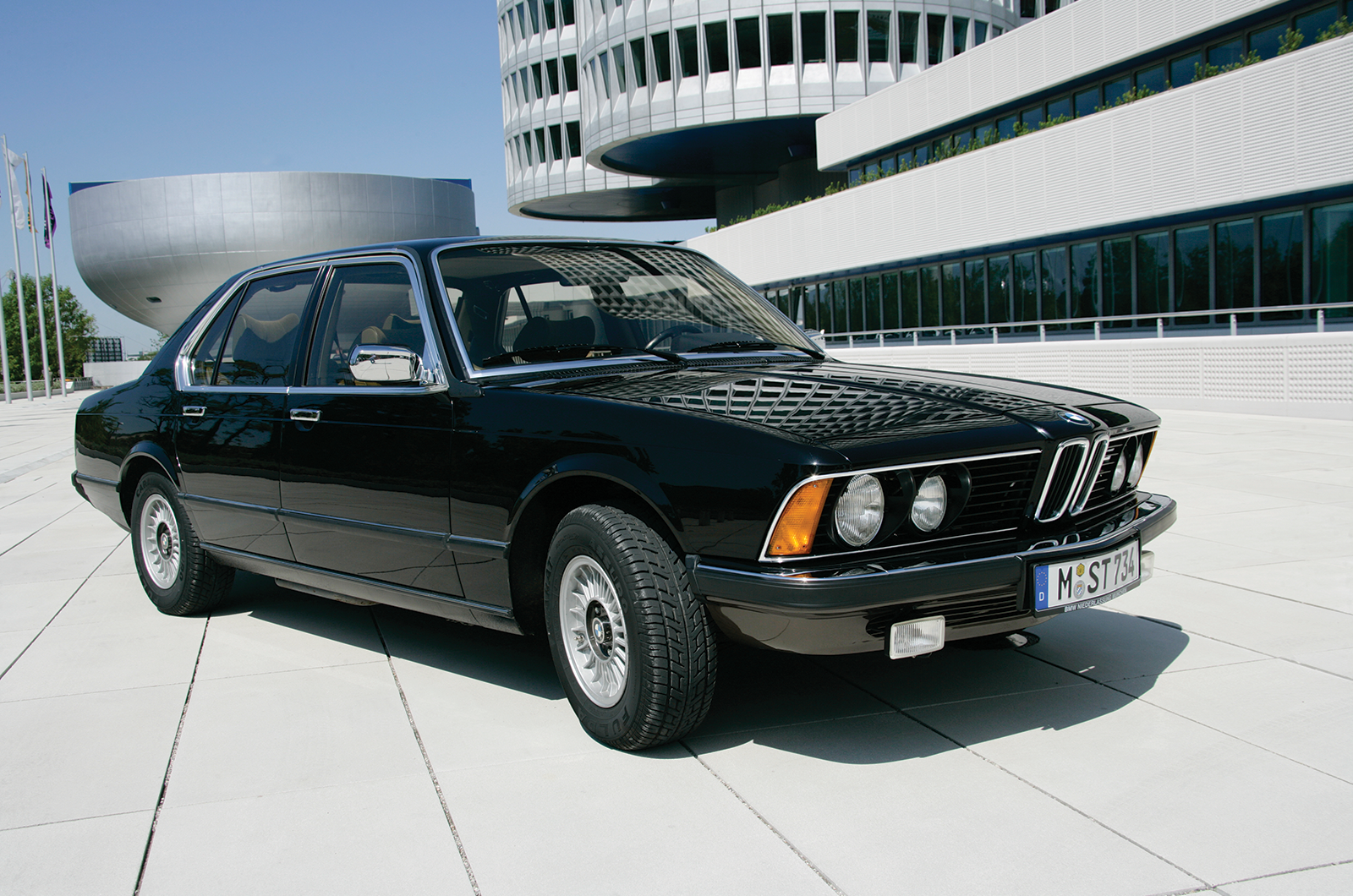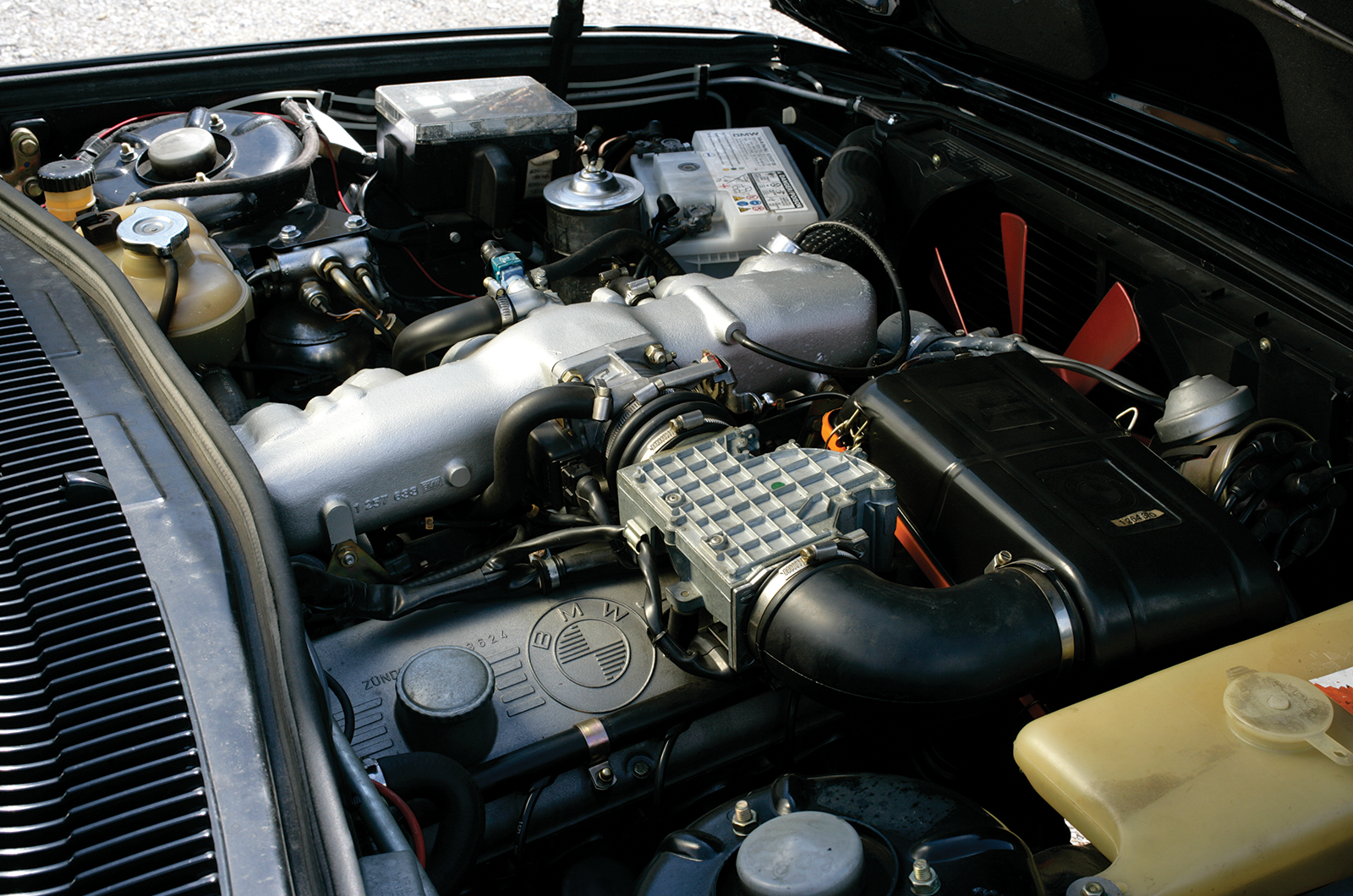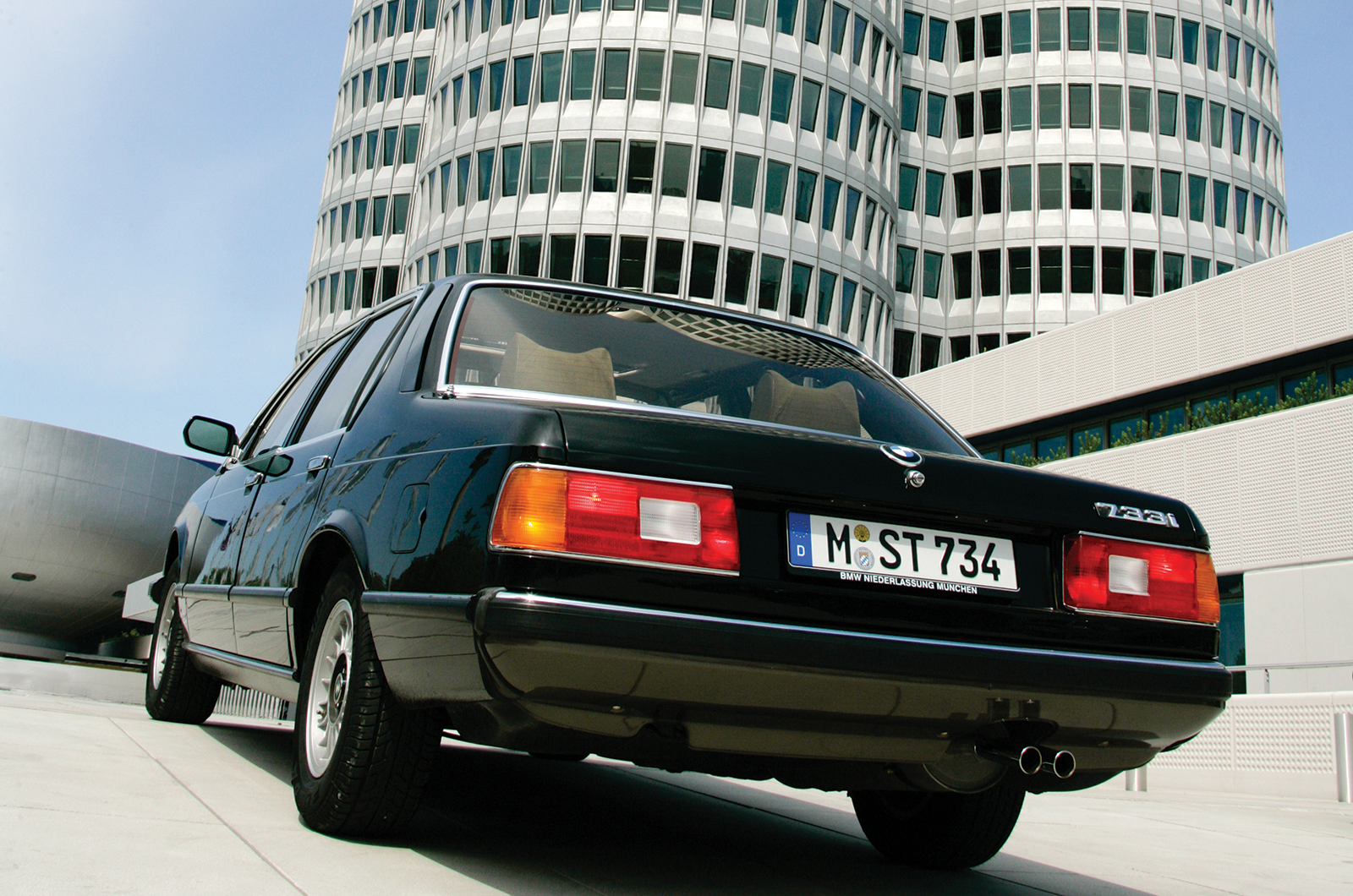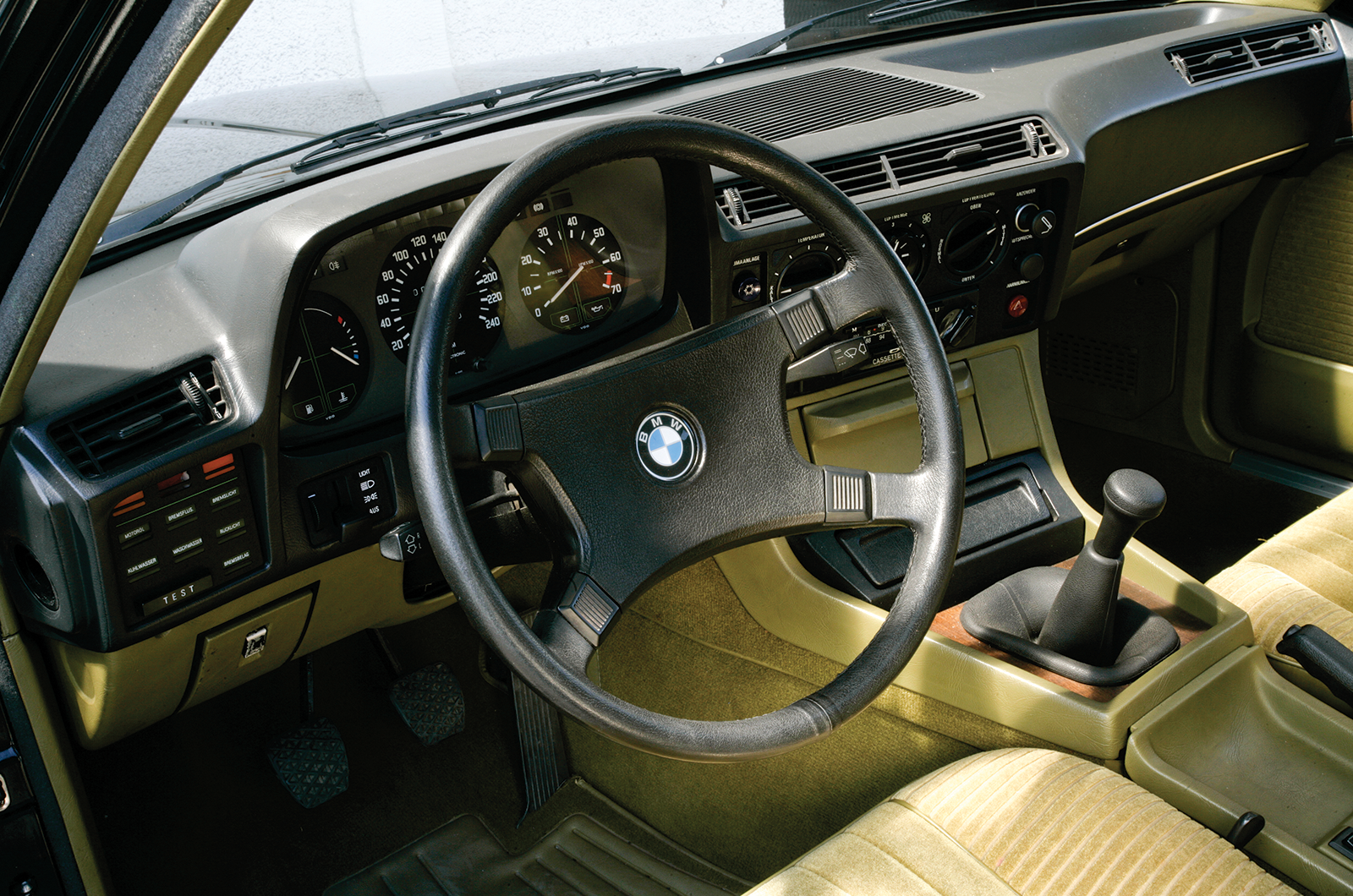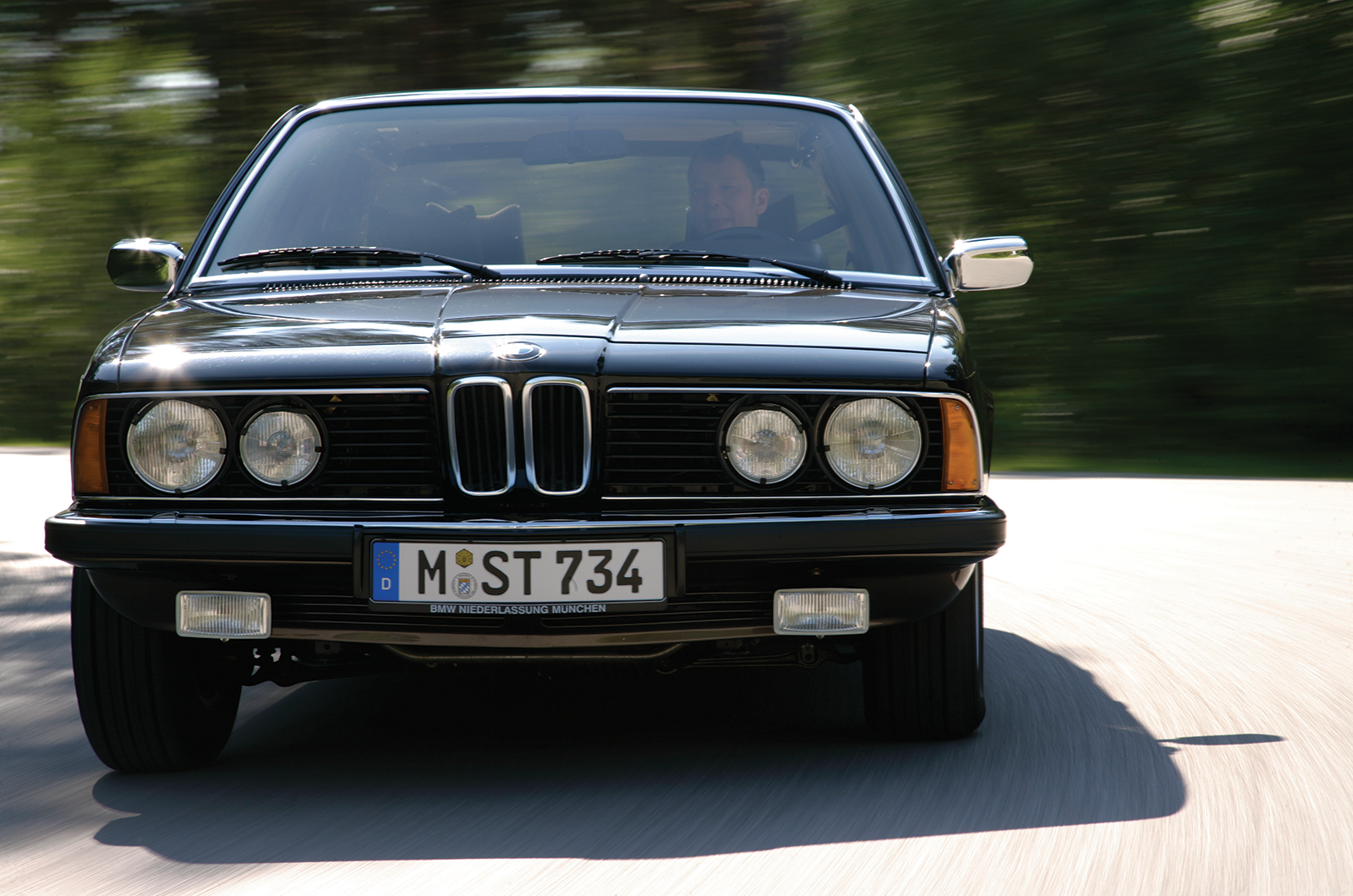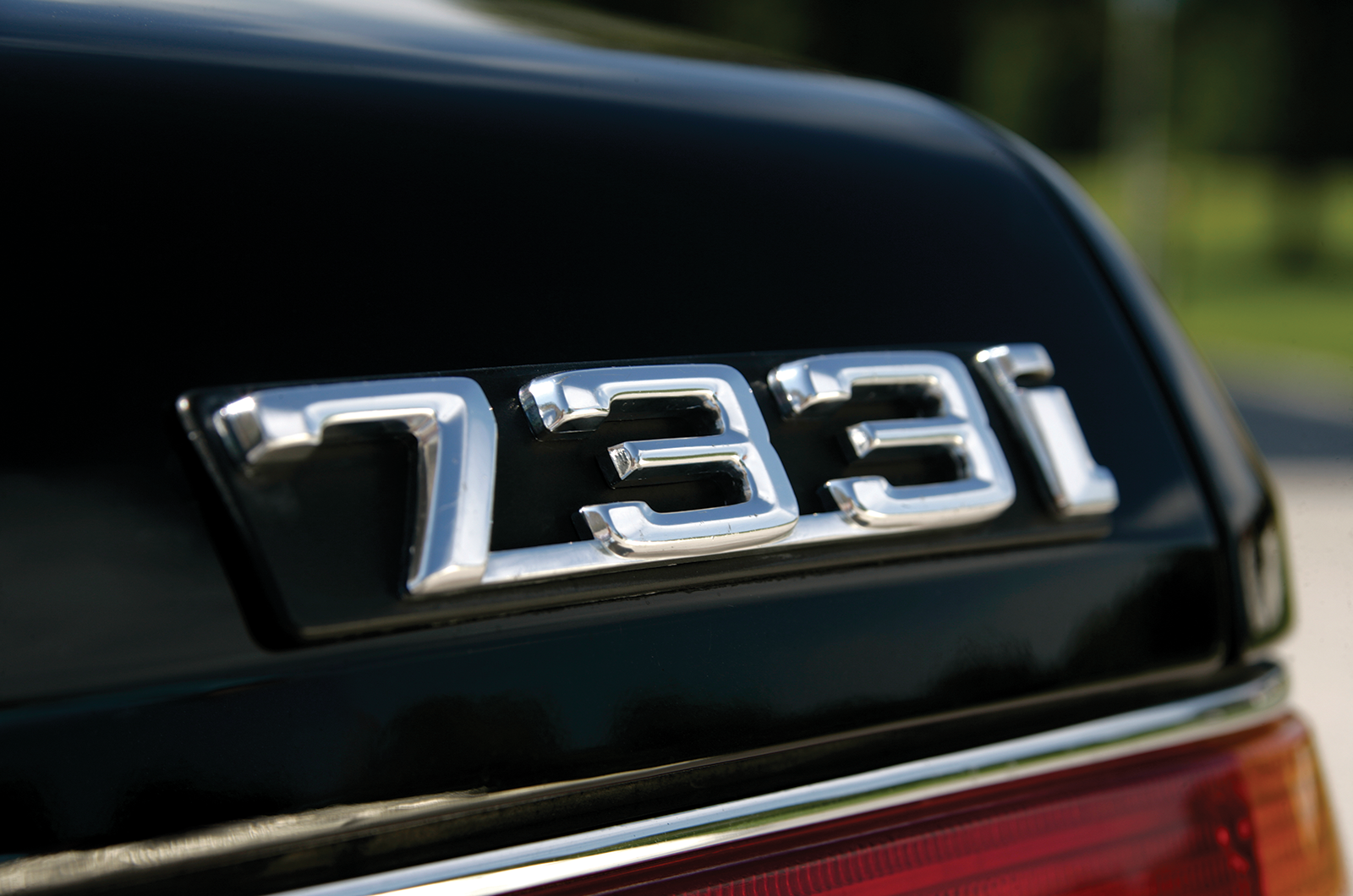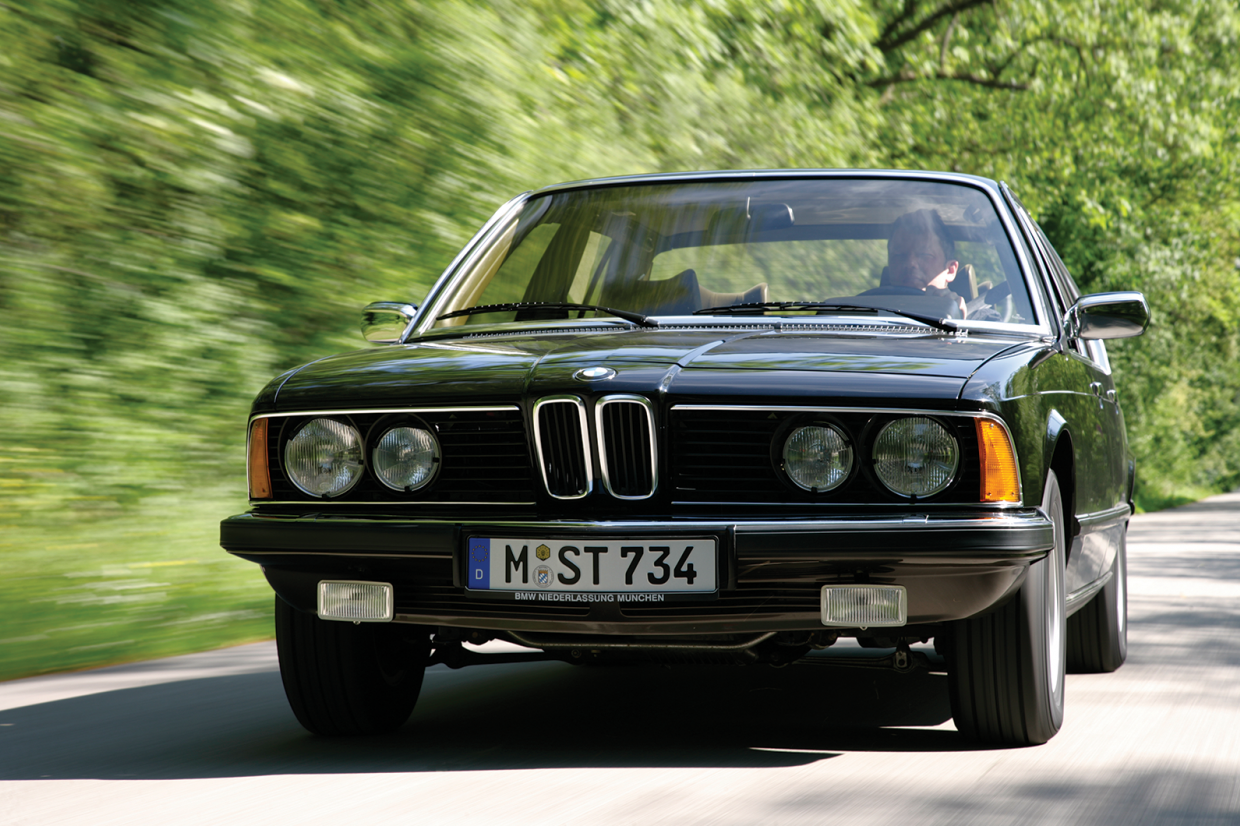
If the Neue Klasse represented the start of BMW’s post-war return to profits and success, then the first 7 Series, which arrived in 1977, seemed to be the final confirmation that the process was complete.
Strategically, it was an important car. This was the first time that BMW had demonstrated the confidence to truly challenge the Mercedes S Class head on with a luxury saloon of comparable ambition.
The E3 was an excellent car, one of Europe’s great saloons, but somehow BMW’s marketing men had never quite allowed it to square-up to the biggest and the best that Mercedes-Benz had to offer.
The 7 Series changed that perception, carefully shifting the emphasis towards refinement and luxury but without sacrificing driver appeal.
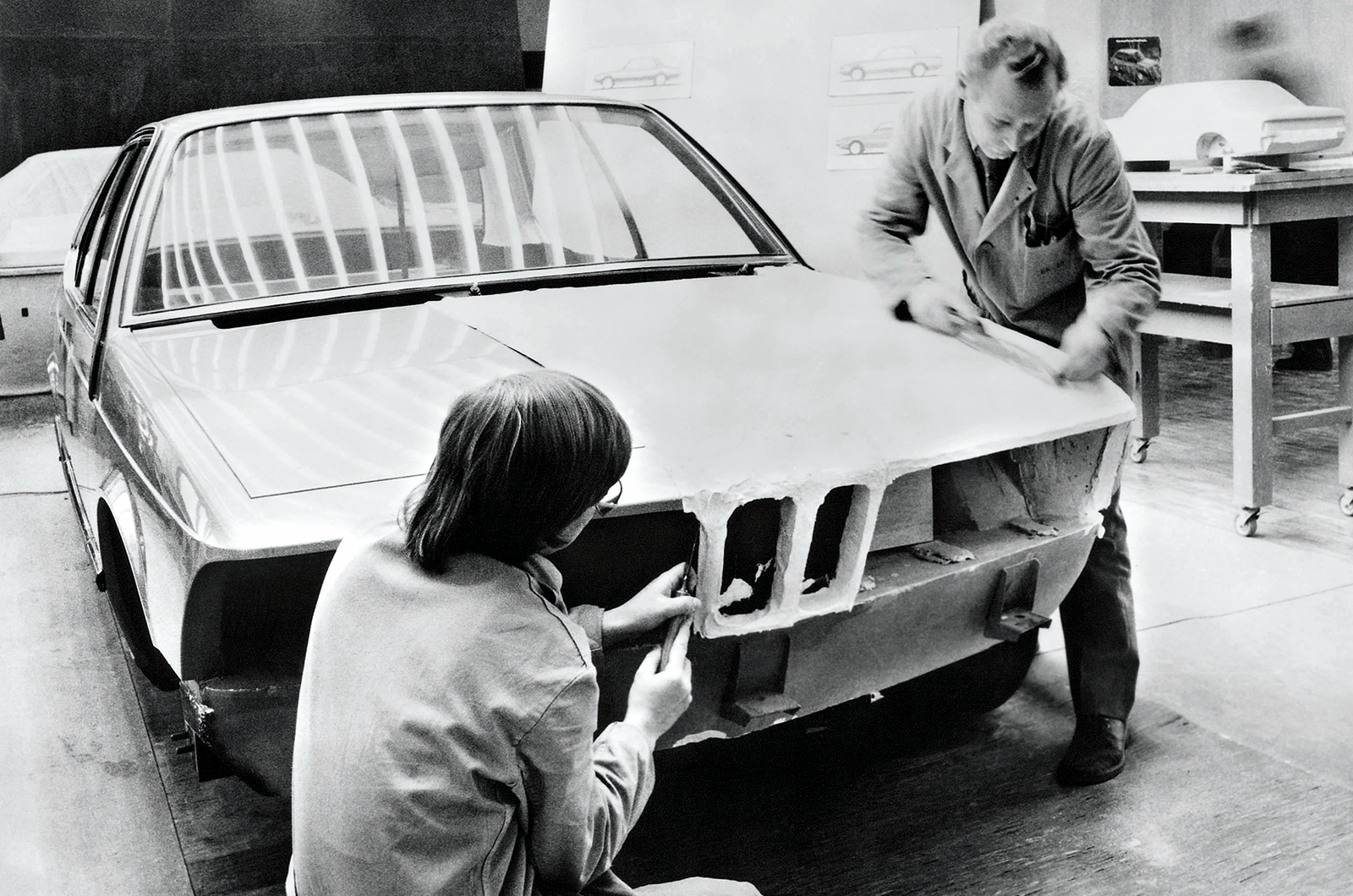
Full-sized clay of new model, with trademark grille kidneys (nieren) about to go on
A more grown-up saloon than the outgoing E3, the E23 7 Series had been in development almost as soon as its predecessor had gone into production.

